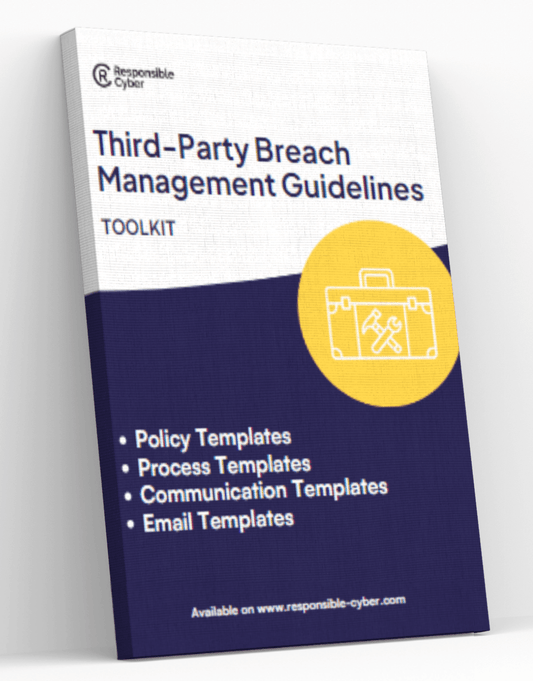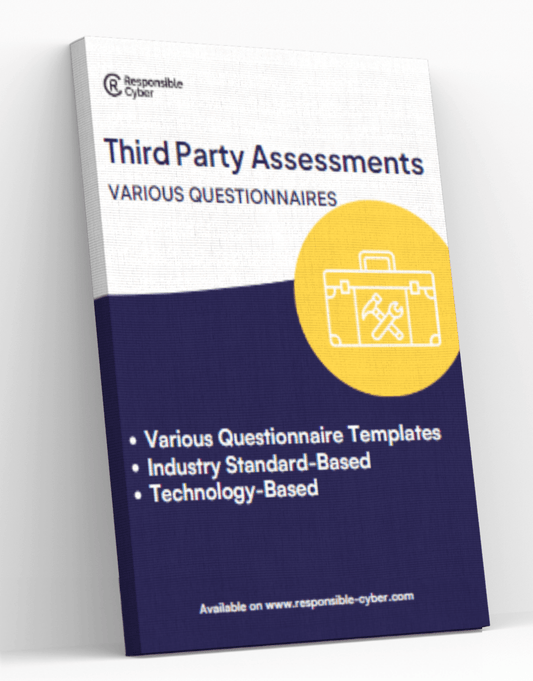Uncommon Third-Party Risks: Identifying Hidden Threats in Your Supply Chain

In the intricate web of modern supply chains, businesses often focus on managing risks posed by well-known third-party vendors and service providers. However, uncommon third parties, such as Employer of Records (EORs), cloud service providers, customers, and partners, can introduce significant but often overlooked risks. These hidden threats can undermine your supply chain security and expose your organization to unexpected vulnerabilities. This article highlights the risks posed by these uncommon third parties and offers strategies for identifying and assessing these hidden threats to strengthen your supply chain security.
Understanding Uncommon Third-Party Risks
Types of Uncommon Third Parties
- Employer of Records (EORs): Organizations that manage employment responsibilities for workers on behalf of another company.
- Cloud Service Providers: Companies that provide cloud computing services, including storage, processing, and software-as-a-service (SaaS).
- Customers: End-users of products or services that might have access to sensitive systems or data.
- Partners: Business collaborators that might share access to systems, data, or other critical resources.
Why Uncommon Third Parties Pose Risks
- Limited Visibility: Uncommon third parties often operate in areas not closely monitored, providing critical services that are essential but not highly visible.
- Specialized Access: These third parties may have access to sensitive systems, networks, or data, increasing the risk of breaches.
- Resource Constraints: Smaller or specialized vendors and partners may have fewer resources to invest in robust cybersecurity measures, making them more vulnerable to attacks.
- Complex Relationships: Involvement of multiple layers of subcontractors and partners can create complex relationships, making it difficult to track and manage risks.
Identifying Hidden Threats in Your Supply Chain
1. Conduct Comprehensive Risk Assessments
To identify hidden threats posed by uncommon third parties, conduct thorough risk assessments:
Map Your Supply Chain
- Inventory All Third Parties: Create a comprehensive inventory of all third parties involved in your supply chain, including EORs, cloud service providers, customers, and partners.
- Identify Critical Dependencies: Determine which third parties provide critical products or services that are essential to your operations.
Evaluate Third-Party Risks
- Assess Cybersecurity Posture: Evaluate the cybersecurity measures and practices of each third party, focusing on their ability to protect sensitive data and systems.
- Analyze Operational Risks: Assess the potential operational risks posed by third parties, such as disruptions to supply or service delivery.
- Consider Financial Stability: Evaluate the financial stability of third parties to ensure they can sustain their operations and invest in necessary security measures.
2. Implement Robust Due Diligence Processes
Effective due diligence processes are essential for identifying and mitigating risks associated with uncommon third parties:
Pre-Engagement Due Diligence
- Security Assessments: Conduct detailed security assessments of third parties before engaging their services, focusing on their cybersecurity practices and compliance with industry standards.
- Background Checks: Perform background checks on the third party’s personnel who will have access to your systems or data.
Ongoing Due Diligence
- Regular Audits: Conduct regular audits of third-party security practices to ensure ongoing compliance with your security standards.
- Continuous Monitoring: Implement continuous monitoring solutions to track third-party activities and detect potential threats in real-time.
3. Strengthen Contractual Agreements
Robust contractual agreements can help mitigate risks associated with uncommon third parties:
Define Security Requirements
- Security Policies: Include specific security policies and requirements in contracts with third parties, ensuring they adhere to your organization’s security standards.
- Access Controls: Specify access controls and restrictions for third-party personnel accessing your systems or data.
Establish Incident Response Protocols
- Incident Reporting: Define clear incident reporting protocols, requiring third parties to promptly report any security incidents or breaches.
- Response Responsibilities: Outline the responsibilities of each party in the event of a security incident, ensuring a coordinated response.
4. Enhance Collaboration and Communication
Effective collaboration and communication with third parties are crucial for managing risks:
Foster Strong Relationships
- Regular Meetings: Hold regular meetings with third parties to discuss security concerns, updates, and improvements.
- Information Sharing: Share relevant threat intelligence and security best practices with third parties to enhance their security posture.
Provide Training and Support
- Security Awareness Training: Offer security awareness training for third-party personnel to improve their understanding of cybersecurity risks and best practices.
- Technical Support: Provide technical support to help third parties implement and maintain robust security measures.
5. Utilize Advanced Risk Management Tools
Leveraging advanced risk management tools can help identify and mitigate hidden threats:
Vendor Risk Management Platforms
- Comprehensive Assessments: Use vendor risk management platforms to conduct comprehensive assessments of third-party risks, including cybersecurity, operational, and financial risks.
- Centralized Monitoring: Centralize the monitoring of third-party activities and risks, enabling real-time threat detection and response.
Continuous Monitoring Solutions
- Real-Time Visibility: Implement continuous monitoring solutions to gain real-time visibility into third-party activities and detect potential threats.
- Automated Alerts: Set up automated alerts for any suspicious activities or deviations from expected behavior, enabling prompt action.
Case Studies and Examples
Case Study 1: Financial Institution and Employer of Record (EOR)
Background: A major financial institution relied on an EOR to manage employment responsibilities for remote workers, introducing potential cybersecurity risks.
Implementation: The institution conducted a comprehensive risk assessment and implemented robust due diligence processes, including regular security audits and continuous monitoring of the EOR’s practices.
Results:
- Enhanced Security: The financial institution identified and mitigated potential risks posed by the EOR, ensuring the security of sensitive financial data.
- Operational Continuity: Regular audits and continuous monitoring helped maintain operational continuity and prevent disruptions.
- Strengthened Contracts: The institution included specific security requirements and incident response protocols in its contract with the EOR.
Case Study 2: Technology Company and Cloud Service Provider
Background: A technology company used a cloud service provider to store and process sensitive customer data, posing potential security and compliance risks.
Implementation: The company strengthened its contractual agreements with the cloud service provider, including specific security requirements and incident response protocols. They also provided security awareness training for the provider’s personnel.
Results:
- Improved Security Posture: Enhanced contractual agreements and security training improved the cloud service provider’s security posture.
- Coordinated Incident Response: Clear incident response protocols ensured a coordinated and effective response to any security incidents.
- Regulatory Compliance: The company ensured compliance with data protection regulations by working closely with the cloud service provider.
Case Study 3: Healthcare Provider and Partner Organization
Background: A healthcare provider collaborated with a partner organization to deliver specialized health services, introducing potential risks to patient data security.
Implementation: The provider utilized a vendor risk management platform to assess and monitor the partner organization’s security practices. They also fostered strong collaboration and communication with the partner.
Results:
- Data Protection: Comprehensive assessments and continuous monitoring ensured the protection of patient data against potential threats.
- Enhanced Collaboration: Regular communication and information sharing enhanced the overall security posture of the partner organization.
- Improved Trust: Strengthened security measures and collaboration improved trust between the healthcare provider and its partner organization.
Conclusion
Uncommon third parties, such as EORs, cloud service providers, customers, and partners, can introduce significant but often overlooked risks to your supply chain. To effectively manage these hidden threats, organizations must conduct comprehensive risk assessments, implement robust due diligence processes, strengthen contractual agreements, enhance collaboration and communication, and leverage advanced risk management tools. By taking proactive steps to identify and mitigate these risks, businesses can strengthen their supply chain security and ensure the protection of their digital assets. Embrace these best practices to safeguard your organization against hidden threats posed by uncommon third parties.
Check out more articles on https://riskimmune.com .







